#east end historic district
Explore tagged Tumblr posts
Text
youtube
Galveston East End District is a historic neighborhood located in Galveston, Texas. It is known for its well-preserved architecture and charming streetscape, which includes a variety of Victorian-era homes and commercial buildings. The district is situated on the eastern side of the island, close to the harbor and the Strand Historic District.
#galveston historic district homes for sale#east end neighborhood association#galveston historic homes#galveston west end#galveston the strand#galveston historic district map#east end historic district#where is east beach in galveston#where is the historic district in galveston#east end historic district galveston#real estate#galveston texas#galveston travel guide#galveston island#stay galveston#stay galveston east end district#Youtube
0 notes
Text
This is INCREDIBLY EXCITING news, as South Korea lags behind many other Asian countries on public viewpoints about LGBTQ+ rights. Well done, South Korea’s Supreme Court, on equal public healthcare rights! Also note, at the end of the article, how fast attitudes are changing about same-sex marriage in South Korea over the last 24 years. Keep the upward trend going! (I’m calling for more South Korean BLs, obviously.)
Paywall-free paste below:
In a landmark ruling for gay rights in South Korea on Thursday, the country’s Supreme Court ruled that same-sex couples qualify for the national health insurance’s dependent coverage, a decision that rights activists hoped could pave the way for legalizing same-sex marriage in the country.
The decision would allow same-sex couples in the country to register their partners as dependents in national health insurance coverage, as married couples or couples in a common-law marriage can. Numerous other benefits are denied to same-sex and other couples living outside the traditional norms of family in South Korea.
In its ruling on Thursday, the country’s highest court ruled that denying a same-sex couple national health insurance dependent coverage “just because they are of the same sex” constitutes a serious discrimination that infringed upon citizens’ “dignity and values, their rights to pursue happiness, their freedom of privacy and their rights to be equally treated by the law.”
The plaintiff, So Seong-wook, filed the legal complaint in 2021. Mr. So wanted to register in the national health insurance program as a dependent of his partner, Kim Yong-min, arguing that their union should be treated as a common-law marriage. But South Korea’s health insurance service rejected his request and told him to pay a separate monthly insurance premium — a decision later affirmed by a district court.
But in February last year, an appeals court overturned the lower-court ruling. It said that although Mr. Kim and Mr. So’s union could not be considered a common-law marriage under South Korean laws, they should still qualify for the national health insurance’s dependent coverage.
In its final say on the case on Thursday, the Supreme Court endorsed the appeals court ruling. It said that same-sex couples formed an “economic cohabitation tantamount to” married and common-law couples.
“I hope today’s ruling will serve as a steppingstone toward enabling sexual minorities to gain equality in the system of marriage,” Mr. So said in a news conference on Thursday.
Mr. Kim said while he describes himself as Mr. So’s “husband” and “companion,” he has never been able to enjoy those titles legally in South Korea.
“I am so happy that the court recognized some of that today,” he said.
Borang Jang, an East Asia researcher at Amnesty International, the rights group, described the ruling as historic.
“The court has taken a significant step towards dismantling systemic discrimination and ensuring inclusivity for all,” she said in a statement. “The case itself is a sobering reminder of the lengthy judicial processes that same-sex couples must endure to secure basic rights that should be universally guaranteed.”
There is no official data on how many people live together in same-sex unions in the country. But between 2016 and 2022, the number of people who live together in “non-kin households” — people living together outside legal marriage — doubled to 1 million, according to government data.
Conservative Christians in South Korea have long campaigned against legalizing same-sex marriage or introducing an anti-discrimination law that protects people of any gender, age, sexual identity or physical ability. But attitudes are changing. At the turn of the century, only 17 percent of South Koreans were in favor of legalizing same-sex marriage, according to Gallup Korea, a survey company. By May of last year, that figure had grown to 40 percent.
By Choe Sang-Hun
248 notes
·
View notes
Text
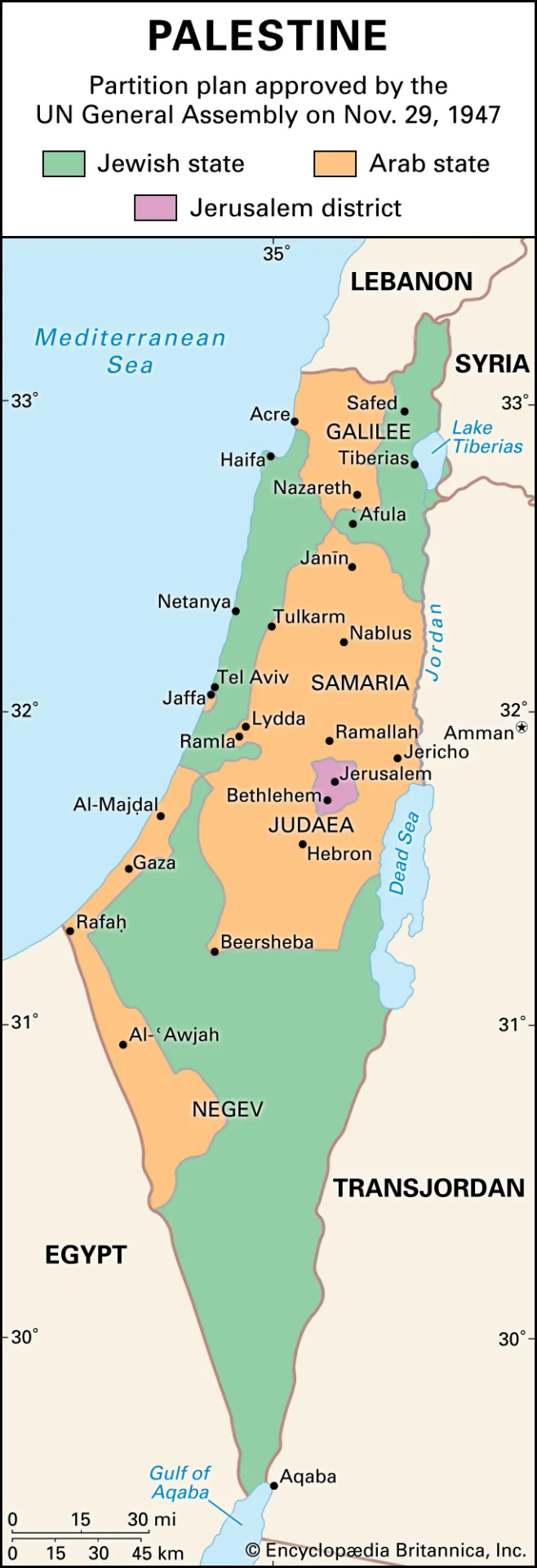
[ID: Map of the partition plan approved by the UN general assembly on November 29, 1947. It marks the "Jewish state" in green (all the border to the east with Syria, much of the south and the inland west including the southern half of the Dead Sea; and most of the northern coastline with the Mediterranean Sea) and the "Arab state" in orange (a strip on the western border with Egypt and southern part of the border with the Mediterranean, including Rafah and Gaza; and the mostly inland north including the area where the Jordan flows into the Dead Sea. In purple the "Jerusalem district" in the center of the country is marked. End ID]
But how fair, balanced, pragmatic, and practicable was the UN 1947 partition plan itself? In gross terms, the partition resolution awarded 55.5 percent of the total area of Palestine to the Jews (most of whom were recent immigrants) who constituted less than a third of the population and who owned less than 7 percent of the land. The Palestinians, on the other hand, who made up over two thirds of the population and who owned the vast bulk of the land, were awarded 45.5 percent of the country of which they had enjoyed continuous possession for centuries.
Looking at the situation in greater detail, Palestine was a country of 27 million dunams (4 dunams = 1 acre). Its population in December 1946 was just under 2 million (1,972,000): 1,364,000 Palestinians and 608,000 Jews. The partition plan divided the country into eight sections: three Jewish, three Palestinian, an international enclave (corpus separatum) including municipal Jerusalem and the surrounding villages, and an enclave for Jaffa that would be part of the Palestinian state, albeit completely surrounded by the Jewish state [...].
At the time, one of the arguments frequently raised by the Jews against a unitary state in Palestine had been the unfairness of Arab majoritarian rule over the Jewish minority. Commenting on this argument, the Pakistani delegate at the UN, Muhammad Zafrulla Khan, remarked: "If it is unfair that 33 percent of the population of Palestine [the Jews in the proposed unitary state] should be subject to 67 percent of the population, is it less unfair that 46 percent of the population [the Arabs in the proposed Jewish state] should be subject to 54 percent?" [...]
In terms of land ownership, despite over seventy years of intensive, centrally organized and internationally financed colonization since the early 1880s, Jewish-owned land on the eve of the partition resolution amounted, according to Jewish sources, to 1,820,000 dunams, or less than 7 percent of the total land area of the country. Now, at the bang of his gavel [...], the president of the UNGA [...] "awarded" the Jews 15,000,000 dunams for the Jewish state. Within the borders of this state, Jewish-owned land at its most inflated estimate amounted to 1,678,000 dunams, or 11.2 percent. [...]
But it was not only the extent of the land allotted to the Jewish state that was at issue. The best lands were incorporated within it—most of the fertile coastal plains (from Jaffa to Haifa) and all the interior plains (from Haifa to Baysan and Tiberias). These included almost all the citrus and cereal producing areas. Half of the former and the vast bulk of the latter were owned by Palestinians. Citrus was the main export crop of the country, accounting before World War II for 80 percent of the total value of exports. [...] As if this were not enough, a full 40 percent of Palestinian industry and the major sources of the country's electrical supply fell within the envisaged Jewish state.
[...] Jaffa [...], the historical Palestinian port and vibrant center of Palestinian cultural and social life, was not only confined within its municipal borders, with no living space for any growth or development, but was also cut off from the orange groves that bore its name and were its principal source of economic livelihood. Haifa—the main port of Palestine, the terminal of the oil pipeline from Iraq, the petroleum depot for the entire country, seat of the most active entrepreneurial sectors of Palestinian society [...]—fell squarely within the Jewish state. Many of the other major Arab towns included in the Palestinian state [...] were left just inside its borders but without their most fertile lands or economic hinterlands. The upper reaches of the Jordan River, and therefore control of the major source of riverine water supply to the Palestinian state, were vested in the Jewish state. The whole of Lake Tiberias and its rich fishing industry, traditionally in Palestinian hands, was incorporated within the Jewish state. The bulk of the Palestinian state, restricted to the central highlands, was landlocked with no direct access to the Red Sea southward or the Mediterranean westward. Its two other coastal towns (apart from isolated Jaffa) had no harbors or port facilities. The only airport (near Lydda) in the country with international connections went to the Jewish state, leaving the Palestinian state with no air access either.
– 1997. Walid Khalidi, “Revisiting the UNGA Partition Resolution,” Journal of Palestine Studies 27.1, pp. 5-21.
717 notes
·
View notes
Text
Artist Sanmu Chan was stopped, questioned and taken away by police in Causeway Bay on Monday, the eve of the Tiananmen crackdown anniversary, as he sought to partake in some performance art.
A large police deployment had appeared near Victoria Park, a venue that once hosted mass remembrance vigils.
Dozens of uniform and plainclothes police officers were stationed across the shopping district, concentrated around East Point Road, Hennessy Road and Lockhart Road. An armoured police vehicle was briefly seen parked outside SOGO mall.
HKFP reporters witnessed Chan write the Chinese characters for “8964” with his finger in the air, referencing the date of the 1989 crackdown.
He also mimed pouring wine onto the ground to mourn the dead, per a Chinese tradition, before police moved in.
The Tiananmen crackdown occurred on June 4, 1989 ending months of student-led demonstrations in China. It is estimated that hundreds, perhaps thousands, died when the People’s Liberation Army cracked down on protesters in Beijing.
Over 30 police officers took Chan away for questioning and created a cordon to separate the artist from the media.
He was then taken away in a police vehicle a little before 9:30 pm, in a scene similar to his detention last June on the eve of the crackdown anniversary.
It is unclear if he was arrested. HKFP has reached out to the police for comment.
First anniversary since Article 23
Tuesday will mark the first Tiananmen crackdown anniversary since the city passed domestic security legislation, more commonly known as Article 23.
Police invoked the new law for the first time last week to arrest former Tiananmen vigil organiser Chow Hang-tung and six others over alleged sedition. They stand accused of using an “upcoming sensitive date” to incite hatred against the central and Hong Kong authorities through social media posts. Police made an eighth arrest in connection with the case on Monday. Hong Kong used to be one of the few places on Chinese soil where annual vigils were held to commemorate the people who died in the 1989 crackdown. But police banned the gathering at Victoria Park for the first time in 2020 citing Covid-19 restrictions, and imposed the same ban in the following year.
No official commemoration has been held since the vigil organiser, the Hong Kong Alliance in Support of Patriotic Democratic Movements of China, disbanded in September 2021. Currently occupying Victoria Park – historically the site of Hong Kong’s vigils – is a five-day patriotic carnival organised by 28 pro-Beijing groups.
57 notes
·
View notes
Text
THE JACK THE RIPPER CASE IN YUUMORI AND IN REALITY
One of my favourite arcs is the Phantom of Whitechapel because it adapted the real Jack the Ripper case quite well and the story was full of elements what actually happened. I wanted to write a little about the similarities as recently was the anniversary of the first murder.
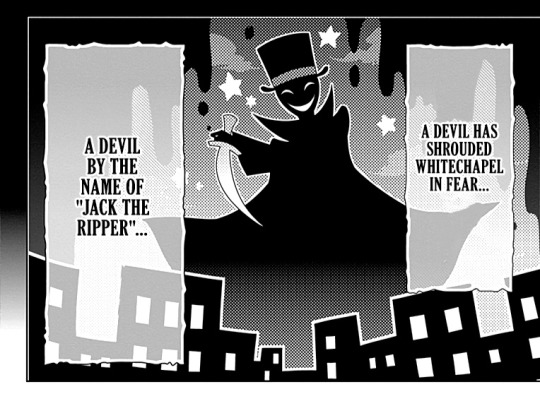
The Jack the Ripper murders or Whitechapel murders took place in 1888 in the East End of London, the infamously poor Whitechapel district where the underclass people lived. Lot of women here earned their money for the living from selling their bodies and a serial killer, Jack the Ripper started to target them. The number of the victims is unsure, the police accepted five murders to be surely connected to Jack the Ripper, they are often referred to as the canonical five. The women got murdered by their throats being cut away and some of their inestines were also removed from their bodies.
The first victim was called Mary Ann Nichols whose body was discovered at 3:40 a.m. on 31th August. She was last seen alive by a woman she lived with in a lodging house. These all are very similar to how Moriarty the Patriot described the murder details, except that there, the victim's name was Melanie Nichols and she was seen with a blond man.
The second victim was Annie Chapman, her body was found at 6 a.m on 8th September and she was last seen half an hour ago in a company of a dark-haired man. The details shown in Yuumori are again similar, just the victim was called Adeline Bergman.


(Interesting addition to here - just like you see, the fan translation uses the victims' real names while the official gave them fake ones. In the original Japanese, also the fake ones are what are used.)
When it comes to the later murders, Yuumori's story deviates from the historical events, since here, the last three victims of the canonical five was just a stage-play by William who tried to catch the killer(s) with setting up a fake Jack the Ripper. In reality, two of the victims, Elizabeth Stride and Catherine Eddowes were found on the same morning of 30th September - the Morigang placing two of the dead bodies at the same place so they get discovered at the same time must be a reference to that. The last victim, Mary Jane Kelly was discovered in the room where she lived on 9th November - her murder was the most gruesome out of the five, what I think Yuumori also referenced with Jack's show who pretended to kill a woman brutally on the roof.
Several letters signed by Jack the Ripper were sent to the newspapers. The media, especially the Central News Agency where some of the letters arrived, also overexaggerated about the details when they wrote about the murders, spreading a lot of misinformation just to sell more papers. In Yuumori, the group of people responsible for the murders who committed them to cause fear in the public and make a revolution by the Whitechapel Vigilance Committee and the police forces collide, hired Milverton to create the Jack the Ripper agenda with the help of his media power and he also manipulated the public opinion. The quotes shown from the letter sent to the Central News in the Moriarty the Patriot manga are from the first letter (called as Dear Boss letter) signed as Jack the Ripper what was also sent to Central News in reality. The real letter was longer and Jack the Ripper threatened to send the lady's ears to the police instead of her organs (however, with one of his later letters, Jack truly sent one of his victims kidney to the police), otherwise they are the same.

The Scotland Yard, just like in Yuumori wasn't really on the top when it came to solve the murders what resulted in riots and conflicts with the Whitechapel Vigilance Committee in reality too. And just like Chief Inspector Arterton was removed from his position in Scotland Yard - tho, for a slightly different reason - for not solving the Jack the Ripper case one of the police chiefs of London back then was also fired. In Moriarty the Patriot, a doctor was wrongly arrested and sent to prison in order to silence the raging public and in real life, lot of doctors were suspected to commit the murders.
In Yuumori, the identity of Jack the Ripper was solved by both Sherlock Holmes and the Morigang - who killed them - but it stayed unsolved for the public. In reality, the identity of Jack the Ripper either remained unsolved or not - few years ago, there was a DNA test what was said to determine the killer's identity, but lot of researchers believe that the test was incorrect and don't accept the answer.
I adore this arc for how well the series merged reality with fiction and it was especially exciting to read knowing the details of the real Jack the Ripper case.
#moriarty the patriot#yuukoku no moriarty#analysis#jack the ripper#i really hope i got every details right correct me if i was wrong
25 notes
·
View notes
Text
My DCU Aesthetic: Gotham City
I have entire folder of pictures and ideas of what I want Gotham City to look like in the next film. I’m excited for what James Gunn has planned, but this is what i would do to our favorite crime riddled city. *I will be using photos to serve as visuals. I do not claim them as my own.*
Wayne Enterprise:
I loved the animated series and still watch it. I loved the Dark Deco style and I feel like the next live action Gotham City should borrow from that style especially when it comes to older buildings or those with wealth. Wayne Enterprises is not the original Wayne Tower however. Wayne Enterprises is a new building and housed most of the new branches. Like Wayne Pharmaceuticals, WayneTech, Wayne Entertainment,etc. While the WayneTech is the largest of several divisions Bruce Wayne does invest his time into the other divisions which has their own heads. Like Lucius Fox being the head of the WayneTech division and Tim Drake was once the CEO and the head executive over several departments and still acts as CEO when Bruce can’t attend to certain issues.
-
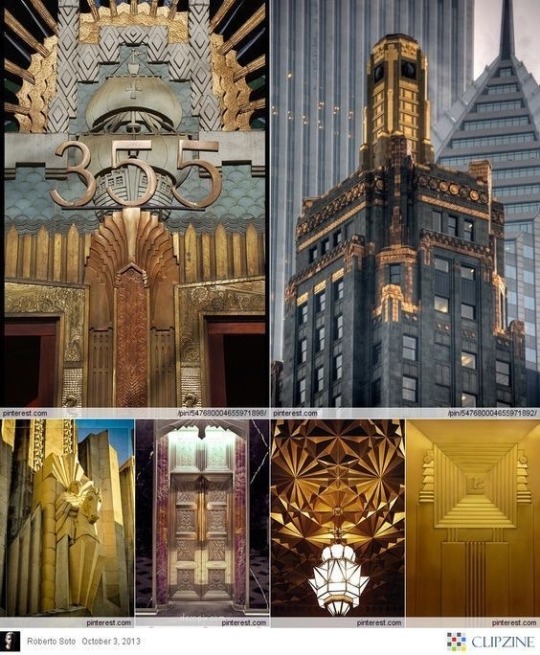
GCPD:
I think GCPD is one of the if not the oldest building in Gotham. It houses all of Gotham Finest, as well as the home of the Bat Signal. Commissioner Gordon runs the police for and wants to maintain order as well as restore the order within the precinct. Prior to him joining it the police department was extremely corrupt and made dealing with the mob. The building is old and has went through several revisions and additions like the major crimes building and the maximum security holding cells to hold and temporary hold some of Gotham’s most infamous and dangerous criminals until further transportation.
-
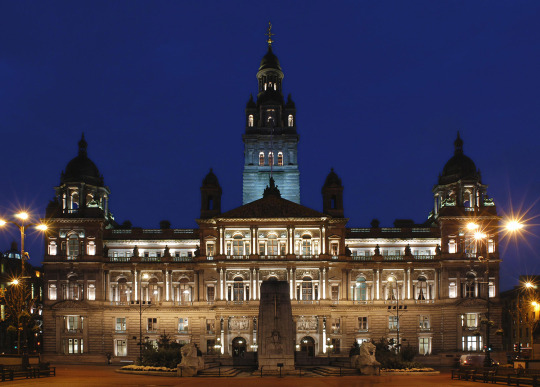
Old Gotham:
Old Gotham is the largest and south most port of the city. A lot of old family industries are rooted here along with a lot of businesses , the financial district and Gotham’s fashion district are located here. It also where most of the other popular locations are like Slaughter Swamp,Blackgate Prison and Lady Gotham.
-

New Gotham (Somerest)
New Gotham is the small and most central of the three larger islands. It’s the island that connects Arkham Island to the mainland. It is also where newer companies and corporations have housed the building on this island since its restoration from No Man’s Land. Gotham’s East End is here protected at lot by Catwoman herself. Chinatown is also here as well.
-
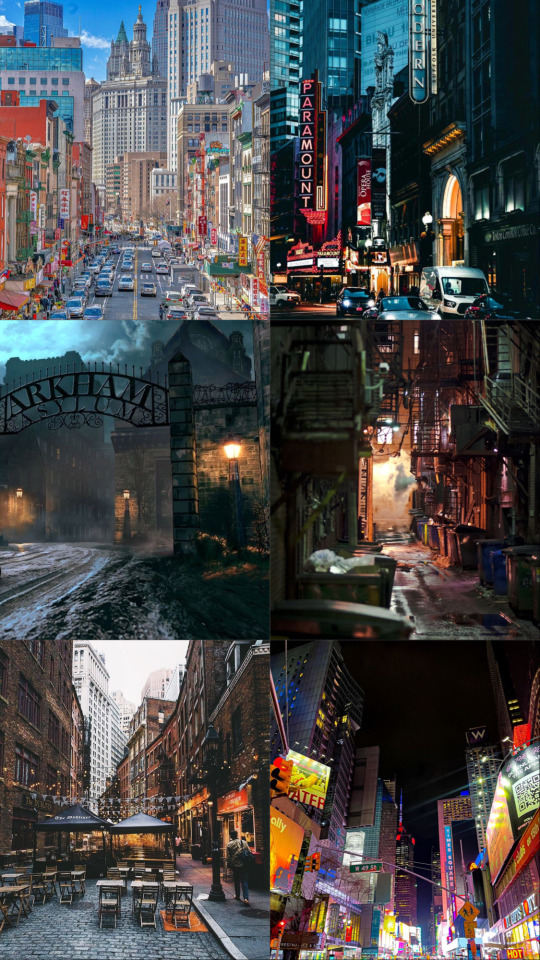
North Gotham (Burnley):
North Gotham is the north most part of the city. This is also the most historic part of the city with a lot of wealthy residents and city officials residing in this area. Gotham State University is also in this area and has several popular small shops, Townhomes, City Hall,cafè, and as well as several prominent landmarks like Gotham Cathedral and several other smaller churches like Devity Church.
-
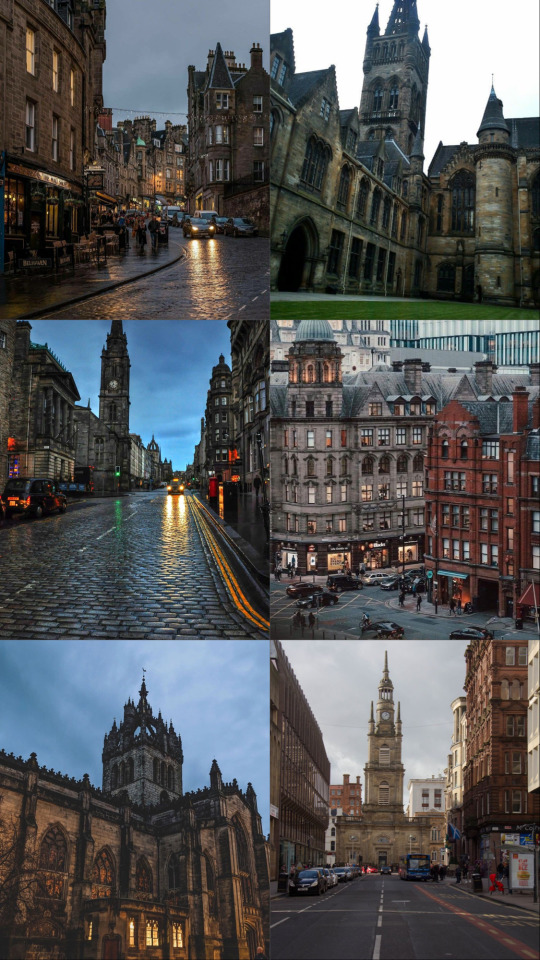
Wayne Manor:
Stately Wayne Manor located in the Bristol district, just outside of the city limits. It’s where some of the upper class residents. Most of the older families settled here but a lot of them in last few decades relocated to the city living in penthouses and townhouses. It’s also home to several of Gotham’s oldest and most prominent schools.
-
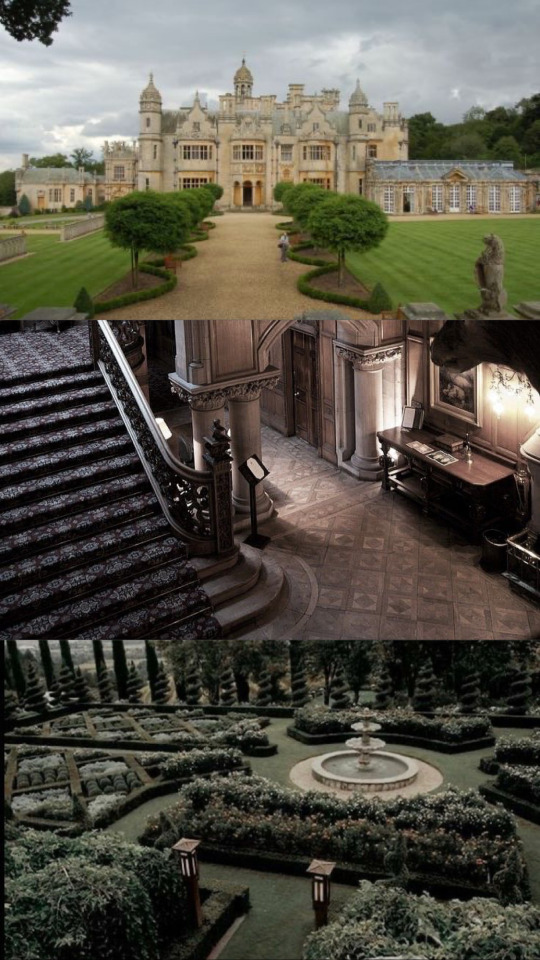
Gotham City Map:
I used this map and different variations when I am talking about my version of Gotham city, as well as thinking of locations within the city for storytelling. As well as a additional one I found that looks like a an irl map of Gotham, which is part of New Jersey.

#batfamily#dc comics#dc universe#dc live action#batman#batfam#dick grayson#gotham knights#jason todd#tim drake
54 notes
·
View notes
Text

Bronze Age Girl Buried With More Than 150 Sheep Ankle Bones Found in Kazakhstan
Archaeologists in eastern Kazakhstan have unearthed a Bronze Age burial mound of a girl surrounded by various grave goods in the Ainabulak-Temirsu Necropolis.
The young girl was laid to rest with a number of peculiar grave goods, including 180 animal ankle bones and a small, exquisite silver accessory depicting a frog on a disc.
The excavations are carried out together with experts from the University of Cambridge and under the direction of Rinat Zhumatayev, Head of Al-Farabi Kazakh National University (KazNU) Archaeology, Ethnology, and Muzology Department. The ongoing excavations have gained momentum since 2016 when the journey to explore the region’s historical treasures commenced in the Zaisan district, spearheaded by Abdesh Toleubaev.
According to The Astana Times, an English-language news outlet in Kazakhstan, the girl’s grave is located near Ainabulak village in the east of the country and dates from Central Asia’s Bronze Age, which lasted from roughly 3200 B.C.E. until 1000 B.C.E.

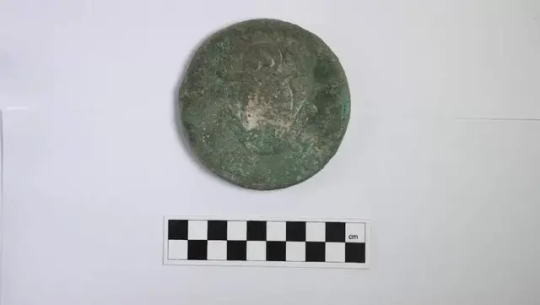
Rinat Zhumatayev, an archaeologist who led the excavation and heads the Department of Archaeology, Ethnology and Museology at Al-Farabi Kazakh National University in Kazakhstan, said: “She was buried on her left side, bent over. Small wire earrings were in both ears and beads around her neck.”
The frog-adorned artifact carries immense significance. Scholars associate the frog motif with water-related rituals found in China and Egypt, adding an intriguing layer to the ongoing research. According to the researchers, this is the first example discovered in Kazakhstan and may be associated with the image of a woman in labour and the cult of water.
The sheer volume of animal bone fragments buried in the burial mound also piqued researchers’ interest. The number of bones buried with this person was extravagant compared to other graves on the Eurasian steppe that contained animal remains, frequently in child and adolescent burials.
Some scientists think that the burial of astragalus bones was part of a “cult practice” and that the bones were used during meditation. However, other researchers view the bones as “symbols of well-being” and “good luck” that served as a “wish for a successful transition from [one] world to others,” Zhumatayev said.
“Our exploration is far from over. By the year’s end, we anticipate unveiling our findings and publishing a comprehensive scientific article,” shared Rinat Zhumatayev.
By Leman Altuntaş.
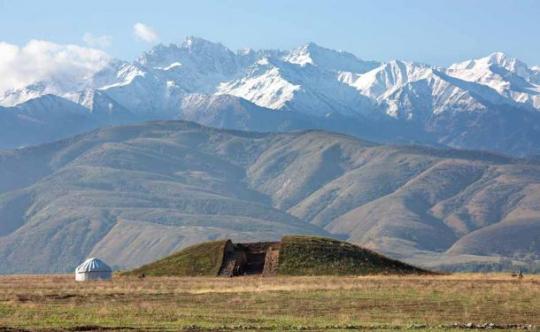
#Bronze Age Girl Buried With More Than 150 Sheep Ankle Bones Found in Kazakhstan#Ainabulak-Temirsu Necropolis#ancient grave#ancient tomb#ancient necropolis#ancient artifacts#archeology#archeolgst#history#history news#ancient history#ancient culture#ancient civilizations#bronze age history
134 notes
·
View notes
Text

Westside School (1923) – 330 W Washington Ave. Oldest surviving school house in Las Vegas.
This was the second school house in Las Vegas when it opened as Branch No. 1, Las Vegas Grammar School, in September 1923, for kindergarten through 8th grade. Las Vegas schools were integrated in the 1920s. In the 30s & 40s, segregationist barriers rose in the public and private sector, including racially restrictive covenants to added to deeds, and the City's refusal to renew licenses of African American-owned businesses downtown unless owners moved to the Westside. Segregation in public education increased as a result, as elementary schools on the Westside filled with African American children whose families were restricted from living in other Las Vegas neighborhoods.
The school is listed on the National Register of Historic Places, and was completely renovated in 2015/2016 by KME Architects.
Timeline of Westside School:
• '23: Original building, two rooms. Allison & Allison of Los Angeles, architect. • '28: Original building expanded with two additional rooms. • '46: Las Vegas School District's first African American teacher, Mabel Hoggard at Westside School. • '48: Annex building addition, west side of the parcel, eight classrooms and administration office. A.L. Worswick, Las Vegas, architect. • '55/56: Clark County School District (CCSD) formed. • '60: a one-room addition constructed on the east end of the north wing of the building • '67: Closed as a school house. • '74: School Board of Trustees sale of the school to Economic Opportunity Board of Clark County (EOD). • '77: Renovation to accommodate offices of EOD and radio station KCEP.
Photo by Dave Chawla, via Saving Places. Sources: “Old Town People Petition for Branch Grammar School.” Las Vegas Age, 2/11/22; “Las Vegas Public School Block a Credit to the City,” Las Vegas Age, 12/30/22; E. Moehring, Resort City in the Sunbelt, Las Vegas (UNLV Press, '89); C. White. “The March That Never Happened.” Nevada Law Journal, Vol. 5, Fall 2004; B. Williams, T. Harris. Westside School Alumni Stories (2012); National Register of Historic Places. Las Vegas Grammar School. Las Vegas, Clark County, Nevada. National Register (2015).
53 notes
·
View notes
Note
I saw a comment you left comparing the Israel-Palestine situation with giving the Dakotas back to the Native people that lived there and then the Mormons or something getting upset because they'd moved in in the interim, and I think that the analogy is reeeeally close to getting to the root of the problem here. Specifically, no group of people should be made to suffer because of what their ancestors did; that's simply not justice, and to believe otherwise is a fallacy.
In Israel, there seems to be a belief that Palestinians don't deserve their country because they didn't have it first, and in Palestine there's a belief that Israel doesn't deserve the land because the modern country was founded within living memory. This has resulted in tensions and warfare between the two nations since Israel's modern founding; Palestine is perceived as squatters on deserved land, while Israel is perceived as modern colonizers that are taking land through a claim just as rooted in religion as history. (In general, religious claims are difficult to legislate; like, the Mormon religion claims they have an ancestral right to the Americas as a "New Zion" based on their religious affiliation, and while that's ridiculous it'd also be really difficult to legally differentiate stuff like that in a neutral way from other religious claims to land.)
I was born and raised in Idaho, and I have a semi-recent historical example to substitute for your analogy. Our capital, Boise, used to have a large Chinatown district; about a hundred or so years ago, after Asian immigrants came to the area to work on the railroads, many of them settled down and started a vibrant community. Horrifically, the local city government of the time ended up forcing out most of the Chinese population by the 1960s, and tore down many of their buildings afterwards over concerns for "public safety". Currently, that area of town is known as the "Basque Block"; after facing persecution back in south-east Europe, many Basque immigrants moved to Boise in search of work and ended up settling in the area that used to be our Chinatown.
I absolutely hate what Boise did to the Chinese immigrants who moved here; it was xenophobic and cruel, full stop. I think Boise should find ways to make amends and pay reparations -- however, I could not support them if that reparation was to force the Basque out to let Chinese immigrants live there instead, especially since the obvious solution would be to find a way to peacefully integrate the communities together. Obviously it's not a perfect analogy (timelines/scales/personal histories aren't 1:1, but what analogy is?), but it's still a real-world scenario and not a hypothetical.
Reparations can and should be made towards descendants of people that have historically suffered, but if those reparations cause a new group of people to suffer and be driven from their homes, isn't that just perpetuating injustice? Why should the suffering of innocents justify causing more innocents to suffer? I don't believe that ancestry justifies cruelty for anyone, and I don't think you do either. We've got to be better than this.
Israel acquired what land it did largely through peaceful, legitimate means, though. Their neighbors rebuke the entire idea a Jew living in the Holy Land can be legitimate, by virtue of not being Arab Palestinian.
And over and over again, they have tried to negotiate a 2-state solution. Over and over again, the forces in control of Palestine refuse to compromise and believe it is their right to exterminate whom they wish in the Holy Land that is not Arab Muslim. Over and over again, they get their teeth crushed and their shit pushed in for their arrogance. Over and over again, we see the repeating problem of the Islamic world declaring any land that Islam has conquered will forever and always belong to the Islamic people and religion, and no others- which is exactly why they still argue that they own large swaths of Spain, after they colonized parts of it. That no legal authority can undo what they beleive was given to them by Allah.
Arabized Muslims are not the oppressed in Palestine. The Arab Muslims in Israel enjoy better quality of life and equality than Arab Muslims in Palestine. It is Palsetine that oppresses the Arab Muslims of Palestine, and believes itself the single authority over all of it, and will not accept any notion a single Islamic state is not uniformly in charge of all.
Absolutely nothing justifies the cruelty attempted to be inflicted onto Israel by the Islamic world. And so long as they try and force their will on Israel, they will be destroyed for it. Not because of divine mandate, but because of the will of man. Palestine will not accept the legitimacy of a 2-state solution, despite it being legitimate, for it diverts on religious grounds.
They're making their own cruelty and holding Israel responsible for it. And I cannot fault Israel defending itself.
3 notes
·
View notes
Text










Edmonton, AB (No. 9)
The Fairmont Hotel Macdonald, formerly and commonly known as the Hotel Macdonald (colloquially known as The Mac), is a large historic luxury hotel in Edmonton, Alberta, Canada. Located along 100 Street NW, south of Jasper Avenue, the hotel is situated in the eastern end of downtown Edmonton, and overlooks the North Saskatchewan River. The 47.7-metre-high (156 ft) hotel building was designed by Ross and MacFarlene and contains eleven floors. The hotel is named for the first prime minister of Canada, Sir John A. Macdonald.
The Grand Trunk Pacific Railway Company opened the hotel on 5 July 1915. Built as an early-20th century railway hotel, the Châteauesque-styled building is considered one of Canada's grand railway hotels. Following Grand Trunk's 1919 bankruptcy, Canadian National Hotels assumed management of the hotel. The building has undergone several renovations since its opening, and an expansion wing to the hotel building was added in 1953. In 1983, Canadian National Hotels ceased operations, and demolished the building's expansion wing in the same year. The hotel property was later sold to Canadian Pacific Hotels in 1988, and was restored and reopened to the public in May 1991. The hotel is currently managed by Fairmont Hotels and Resorts.
Hotel Macdonald is at 10065 100 Street NW at the eastern end of downtown Edmonton. The hotel property is bounded by 100 Street NW to the north and west, with ATB Place west of the hotel. Grierson Hill NW bounds the hotel property to the east and south, with the roadway sitting adjacent to the North Saskatchewan River valley park system. The building overlooks the escarpment of the North Saskatchewan River.
Located at the eastern end of downtown Edmonton, south of Jasper Avenue, the hotel is situated near Edmonton's central business district, and several other neighbourhoods; including Riverdale to the east, and Rossdale to the south.
Source: Wikipedia
#viola#Regal Geranium#yellow Viola#White osteospermum#Frank Oliver Park#Ross and MacFarlene#Jasper Avenue#evening light#Alberta#Canada#summer 2024#travel#original photography#vacation#tourist attraction#landmark#cityscape#architecture#Edmonton#wildfire smoke#downtown#flower#street scene#Fairmont Hotel Macdonald
2 notes
·
View notes
Text



Exploring Manhattan: The Heart of New York City
Manhattan, the vibrant heart of New York City, is a place where history, art, culture, and commerce converge. With its iconic skyline, diverse neighborhoods, and endless entertainment options, Manhattan offers an experience like no other. Whether you’re visiting for the first time or rediscovering the city as a local, here’s everything you need to know about exploring Manhattan.
1. Iconic Landmarks
No visit to Manhattan is complete without exploring its famous landmarks. The Statue of Liberty stands proudly in New York Harbor, symbolizing freedom and hope. Nearby, Ellis Island shares the stories of millions of immigrants who helped shape the city’s history. Another must-see is the Empire State Building, offering breathtaking panoramic views of the skyline from its observation deck.
Other landmarks include Times Square, known as "The Crossroads of the World," where bright lights and billboards dazzle visitors day and night. Central Park, an oasis in the city's midst, provides a natural escape with walking trails, ponds, and beautiful scenery. For art lovers, the Museum of Modern Art (MoMA) and the Metropolitan Museum of Art are must-visit destinations.
2. Diverse Neighborhoods
Each neighborhood in Manhattan has a unique personality, offering something for everyone. SoHo, known for its cobblestone streets and trendy boutiques, is a haven for art enthusiasts and fashionistas. The Lower East Side showcases the city’s immigrant history with vibrant eateries and cultural sites. For a taste of luxury, visit the Upper East Side, home to upscale shops, fine dining, and classic brownstones.
Head to Greenwich Village for a bohemian vibe with live music venues, quirky coffee shops, and the birthplace of the Beat movement. Meanwhile, Harlem offers rich African American culture, from soul food to jazz clubs and historic churches. Chinatown and Little Italy are other highlights, each offering unique flavors, cultural landmarks, and annual festivals.
3. Entertainment and Nightlife
Manhattan is famous for its Broadway district, where world-class musicals and plays entertain millions. Be sure to catch a show in one of the historic theaters, or, for a unique experience, see an off-Broadway production. The nightlife scene is also thriving, with rooftop bars offering stunning skyline views, jazz clubs in the West Village, and dance clubs in Chelsea.
If you prefer a more relaxed evening, consider a dinner cruise along the Hudson River. You’ll enjoy beautiful views of Manhattan’s illuminated skyline, including landmarks like the One World Trade Center, Chrysler Building, and Brooklyn Bridge.
4. Foodie’s Paradise
Manhattan is a culinary haven, offering everything from food trucks to Michelin-starred restaurants. For street food, try a New York-style hot dog, a classic slice of pizza, or a bagel with lox and cream cheese. Food halls like Chelsea Market and the Essex Market offer international cuisine, artisanal groceries, and unique dining experiences.
If you’re in the mood for fine dining, Manhattan boasts some of the world’s best restaurants. Jean-Georges, Eleven Madison Park, and Nobu offer exceptional experiences for food lovers. And don’t forget the borough's dessert scene: Magnolia Bakery’s cupcakes and Levain Bakery’s cookies are must-tries.
5. Shopping Extravaganza
For shopping, Fifth Avenue is a dream destination, offering high-end brands like Gucci, Prada, and Louis Vuitton. For unique finds, head to the markets in Hell’s Kitchen or the boutiques in NoLIta. And if you’re looking for budget-friendly options, the Garment District has plenty of sample sales and outlet stores.
Manhattan truly has it all—from world-renowned landmarks and diverse neighborhoods to mouth-watering cuisine and unparalleled entertainment. Whether you’re strolling through Central Park, dining in Little Italy, or exploring the art galleries in Chelsea, Manhattan will capture your heart and inspire memories that last a lifetime.
2 notes
·
View notes
Photo

Shochikucho House is a minimal residence located in Kyoto, Japan, designed by Ryue Nishizawa. A new family home has been planned in the heart of a historical district in the city. The plot is a long, rectangular shape running east to west, with a width of 5.5m on the short end facing the west and a depth of about 25m.
45 notes
·
View notes
Text
Okay, since my friend @thealmightyemprex frequently posts about their original work with the goddesses, I guess I can post about my work.
This is what I have been working these past few days instead of writing my story. I have been worldbuilding a setting for it.
Please, judge this place and give me back your feedback
Avabourg
Overview
Avabourg, officially the Princesstocratic Kingdom of Avabourg, is a sovereign city state and microstate located in the Northwest region of Nemolia. It is a semi-enclave bordered by the kingdom of Matakin to the north, east and west.
Located on the shore of Lake Rapunzel, it has a territory of 234 square miles (606 square kilometers) and a population of 2,746,388 people according to the last census, making it the most densely populated sovereign state. The official languages are Freutsch, Shier, Olu, and are spoken and understood by many residents.
The kingdom is governed under a form of electoral monarchy, with the Queen being elected by the parliament and serving a life position as head of state. The King is head of the military and is elected alongside the Queen as her vice. The Prime Princess is the head of government and is elected by the vote of the Princes and Princesses of the parliament in two turns. Elected officials of Legislative, and Judiciary, as well as trained members of the Military forces are given the title of Prince and Princess, making Avabourg the only kingdom in all Nemolia where aristocratic titles are used in government positions.
Avabourg is an international hub for culture, commerce, industry, education, technology, telecommunications, and transportation. Avabourg made noted contributions to urban planning, architecture, technology, finances, and the faeric arts, such as the Frau Holle Academy, the development of the Beautiful City Movement, the financial district of Field of Miracles, and the steel-framed skyscraper.
Avabourg is world renown for its extremely open policy of refugee rescuing and sheltering. Avabourg citizenship is also known for being extremely easy to obtain, with the only requirements being a beating heart, one foot, and a hand with more than two fingers. There are currently debates about ending the hand with two fingers requirement.
The nation’s official symbol is the orange tree.

Geography
Avamoor is at the Southwest shores of Lake Rapunzel.
The city is divided into six boroughs: Nouveau Sight, Millionaire’s Shantytown, Forevergreen, Gardenia, Riverside, and Rocky Road.
Nouveau Sight

At the center there is Nouveau Sight, the most densely populated borough and the core of the Avabourg metropolitan area. Nouveau Sight serves as Avabourg's economic and administrative center. In this borough skyscrapers and century old buildings stand side by side. Buildings with significant cultural or historical value are encapsulated in giant domes of steel and glass.
There are ornate suspended gardens and fields of flowers in every level of the buildings.
The borough is known for its huge population of Hoblings (halflings) and for being a center for Hobling culture for the last one hundred years.
Nabini Ort has also the largest number of Nabini people outside of Nabus. (African inspired land)
At the heart of the Nouveau Sight, there is the Silver Palace, which houses the Parliament, the Supreme Court, the National Library, and the National Museum. It’s also the home of the King and Queen of Avabourg and their families.
On the palace courtyard there’s the House of Glass, which abrigates a botanic garden. The largest species on the House of Glass is the giant Orange Tree, a gift from the Sanid Empire (Iran inspired land). The giant Orange Tree is the kingdom’s symbol.
Riverside

At the northeast is Riverside. It’s famous for heavily ornate gondolas that flow over the channels decorated with stone walls overgrown with evergreens.
Since the 1950s, Riverside has been known for its lively cultural life where there is a concentration of many restaurants and bars where Avabourgers artists and intellectuals would meet.
It’s where Frau Holle Academy is located. The building is five stories high and it emerges from the waters with ancient Preteric Architecture. Frau Holle Academy only started accepting male students ten years ago and there’s still disputes about making the institution fully co-ed. It’s reference in the study and research of the faeric arts and witchcraft.
It has the largest concentration of Sanid people outside of Sanidia. (Iranians)
It’s the birthplace of Javelin, a music genre that heavily uses javelins, trumpet-horns, accordions, and lyres. Its songs are both poetic and playful, varying from romantic to comedic.

Rocky Road

At the northwest is Rock Road. It’s the farthest away from Nouveau Sight and from the River Prestus. Rocky Road is known for its thin dark towers made of black stone and soil of pitch black sand. It’s also known for the Viola flowers, creeping purple flowers with an intense scent that grow at the bases of the stone towers, one of the few vegetation life that can grow there. It’s an area of intense industrial activity.
The towers serve the function of stopping any possible air or water pollution from escaping and contaminating the population or rest of the city.
The large factories of the region are moved entirely by faeritricity, a power source extracted straight from the ground with minimum emissions of carbon. Avabourg is near the crossing of two ley lines.
It’s an area of landfills, as well as recycling centers and Inferno Ovens dedicated to transforming residues into a secondary power source of faeritricity.
Millionaires’ Shantytown

At the southeast is Millionaires’ Shantytown. It’s located over the hills that border the shores of Lake Rapunzel. It corresponds to the highest property values and taxes in Avabourg. It has an ethnically and culturally diverse population of 13.2 thousand people.
It's home to many celebrities and it is noted for numerous hotels and resorts, and it’s known as the place of the rich and famous.
The Glass Beaches are a popular attraction: private beaches encapsulated by glass houses that keep a Tropical weather all year long.
The Silver Light is a neighborhood in the central region of the burrough, and it’s the film and television industry center in Avabourg. It’s also home of the Camera Heads, creatures with cameras for heads that are responsible for all the filming and recording processes.

Forevergreen

To the southwest is Forevergreen. It’s a suburban area with low traffic and a high forested area, with most properties being built under trees or over then.
Winnies, racial group originated from the Hundred Acre Wood, seem to have become the majority since 1926.

It’s home for seven of twelve largest universities of Avabourg. They are also the biggest exporters of honey.
Gardenia

To the south there is Gardenia. Gardenia consists of seven villages distant from the downtown area. Its economy is entirely agriculture and agropecuary based.
The eight villages are Boring, Humbug, Hamelin, Back-in-my-day, Trumpistania, Talkey, Malafaia, and Ruritania.
The population is mostly northist humans, and is heavily conservative.
Okay guys. What do you think?
@ariel-seagull-wings @tamisdava2 @mask131 @princesssarisa @the-blue-fairie @theancientvaleofsoulmaking @natache @thealmightyemprex
3 notes
·
View notes
Text
The Cardboard Box
This was originally published in 1893. It was however pulled from Memoirs apparently at Doyle's request, originally appearing in just the first US edition and did not reappear until much later in His Last Bow.
Croydon is a large town less than ten miles south of Charing Cross. Historically part of Surrey and a borough in its own right in 1889, it was incorporated in Greater London in 1965.
It would later be home to the UK's sole international airport in the interwar years, which closed in 1959. The terminal building survives and there is a museum on site.
Croydon is today a major transport hub, home to the only tram network in Southern England, which was opened in 2000 using a combination of old railway lines and new street tracks. East Croydon is the main station on the London to Brighton Line, with fast electric trains to Victoria.
It has a theatre - no Shakespeare currently on though, sadly.
Croydon was within the Metropolitan Police District, so Lestrade is within this jurisdiction.
ACD would later run for Parliament as a Liberal Unionist, parting company from the Liberal Party because of his opposition to Irish Home Rule.
Wallington is also now in London and was already its own parish at this time.
The temperance movement was pretty big across the Protestant world by this point. Britain never went as far as the US in prohibition though - despite strong support in the Liberal Party, the Conservatives were resolutely opposed and the best they could do was high taxation, along with regulated opening hours that were introduced when the First World War began.
We get Lestrade's first initial - G.
Foolscap is an 8x13-inch sized paper that was commonly used in Europe and the British Commonwealth before A4 took over.
Shadwell is an area in the East End of London, on the river and then part of the docks.
The Albert Dock is probably the Royal Albert Dock. This closed in 1981 and an attempt to turn the area into a business park in 2013 has just resulted in an area that is good for filming zombie movies: https://www.theguardian.com/artanddesign/2022/jul/20/empty-promise-the-fantasy-city-within-a-city-that-turned-into-a-ghost-town
28 notes
·
View notes
Text
The Must-Visit Destinations Germany
Germany, with its rich history, vibrant culture, and stunning landscapes, offers a diverse array of attractions that cater to every type of traveler. From the bustling streets of Berlin to the fairytale castles of Bavaria, Germany is a treasure trove waiting to be explored. Whether you're a history buff, a nature enthusiast, or an art lover, Germany has something special for you. Here are some of the best places to visit in this captivating country.

Berlin: The Heart of Germany
Berlin, the capital city, is a dynamic blend of the old and the new. Its historical significance is palpable as you explore iconic sites like the Brandenburg Gate, the Berlin Wall, and Checkpoint Charlie. The city is also a hub of modern art, culture, and nightlife. The East Side Gallery, a preserved section of the Berlin Wall covered in murals, and the Museum Island, a UNESCO World Heritage site, are must-see attractions. Berlin's diverse neighborhoods, each with its unique vibe, offer endless opportunities for exploration.
Munich: Bavarian Charm and Oktoberfest
Munich, the capital of Bavaria, is renowned for its picturesque architecture, world-famous beer gardens, and vibrant cultural scene. Marienplatz, the central square, is the perfect starting point to explore the city's historic buildings, including the stunning New Town Hall. Munich is also home to the legendary Oktoberfest, the world's largest beer festival, which attracts millions of visitors each year. Don't miss a visit to the Nymphenburg Palace and the English Garden, one of the largest urban parks in the world.
Neuschwanstein Castle: A Fairytale Come to Life
Nestled in the Bavarian Alps, Neuschwanstein Castle is straight out of a storybook. Commissioned by King Ludwig II, this 19th-century Romanesque Revival palace served as the inspiration for Disney's Sleeping Beauty Castle. The castle's picturesque setting, surrounded by lush forests and towering mountains, makes it one of the most photographed sites in Germany. Guided tours offer a glimpse into the opulent interiors and the fascinating history of Ludwig II's dreamlike creation.
The Romantic Road: A Scenic Journey
The Romantic Road is a picturesque route that winds through some of Germany's most charming towns and villages. Starting in Würzburg and ending in Füssen, this scenic drive takes you through medieval towns, vineyards, and castles. Highlights include the walled town of Rothenburg ob der Tauber, known for its well-preserved medieval architecture, and the baroque city of Würzburg, with its impressive Residenz Palace. The journey culminates at Neuschwanstein Castle, providing a perfect end to this enchanting road trip.
The Black Forest: Nature's Wonderland
The Black Forest, or Schwarzwald, is a region of dense forests, rolling hills, and quaint villages. Famous for its cuckoo clocks, thermal spas, and scenic beauty, the Black Forest is a haven for outdoor enthusiasts. Hiking, cycling, and skiing are popular activities in this area. The town of Baden-Baden, with its luxurious spas and casino, offers a touch of elegance, while Triberg is home to Germany's highest waterfalls and the Black Forest Museum, which showcases the region's rich cultural heritage.
Hamburg: The Gateway to the World
Hamburg, Germany's second-largest city, is a bustling port city with a unique maritime charm. The historic Speicherstadt, the world's largest warehouse district, and the modern HafenCity, with its striking Elbphilharmonie concert hall, showcase Hamburg's blend of old and new. Take a stroll along the Reeperbahn, known for its nightlife and entertainment, or relax at the serene Alster Lakes. Hamburg's rich musical heritage is evident in its numerous theaters, live music venues, and the Beatles' early performance venues.
Conclusion
Germany's diverse landscapes, rich history, and vibrant culture make it a destination that promises unforgettable experiences. Whether you're exploring the historic streets of Berlin, sipping beer in a Munich garden, or marveling at the fairytale beauty of Neuschwanstein Castle, each destination offers a unique glimpse into the heart and soul of Germany. Pack your bags and embark on an adventure that will leave you with memories to cherish for a lifetime.
2 notes
·
View notes
Text
📢Psychonauts NSR AU Observations, Chapter 3: Akusuka District📢
Traditional Mask
Milla: Is this supposed to be a traditional mask of the east? It more looks like a cheap knock-off!
Sasha: Despite the appearance, it’s supposed to be a replica mask. They used to be popular around here, but now these ‘replicas’ exist. Guess that Akusuka is no longer ‘classy’.
Traditional Drums
Milla: Man, these things were impossible to find! There were back-orders of these things within performance halls.
Sasha: I’ve played drums like these since college. They were a form of escapism ever since I stopped talking to… 'him’.
Raz Toy Capsule Machine
Milla: Oh dear… a toy capsule machine. Sasha hates these things. Better not let him see this.
Sasha: …Das ist ein Stück nutzlose Scheiße.
Internet Service Provider Stand
Milla: Ok, I know that Raz is an idol, so the music industry tends to make sponsors with musicians like Raz. But this has nothing to do with music at all!
Sasha: As far as celebrity tie-ins come, this makes sense. But wouldn’t it be better to have celebrities sign autographs?
Vallermo Dam Replica (Fanmade)
Milla: A dam? Well, I get that he is a sailor and a dam blocks water. But… I got nothing. At all.
Sasha: Even though Akusuka is influenced by Japanese Culture. It was heavily influenced by Grulovian Culture as well. The Vallermo Dam was one of the well known landmarks of Grulovia. It was most notable for the 'Vallermo Dam Break’. Which killed thousands. Kind of weird but historical for Raz to place it here.
DIY-Droid: Keishi Ver. (Fanmade)
Milla: Ok, I know that Raz is supposed to be a digital idol. But this… this is really creative. I won’t lie.
Sasha: DIY-Droid is a vocal software where artists can create songs using digital idols. I’m guessing that this was a sponsor by Raz where that users can use his older siblings. Shame that it didn’t work at all.
Deep-Sea Angel Manga (Fanmade)
Milla: Aw! Raz gets his own manga? That’s kinda cute. But that’s a bit much to ask for… and I want it to be free.
Sasha: According to sources, Deep-Sea Angel is the story of a sailor who ends up crashing into a mysterious sunken island where he ends up helping Raz creating the 'Song of Miracles’. That's… that's… that,s bizarre for my taste.
Battle Stars Movie Poster (Fanmade)
Milla: The Battle Stars are getting a movie? For their 30th anniversary? Sign me up! It better be good, unlike it’s 20th anniversary. Ugh.
Sasha: I didn’t watch this show when I grew up, but I did hear that one of my former roommates loved this show. His favorite character was Mystic Star, who had the ability to change into four forms that each had a power of an animal… shame for the actor who played him.
Sniffles-Branded Honey (Fanmade)
Milla: OMG SNIFFLES! IT’S SNIFFLES-BRANDED HONEY! AND IT STILL SMELLS FRESH AND IT’S FREE!
Sasha: Milla told me about Sniffles. She was a well known bassist. She also specializes in beekeeping. I bet Milla will buy four jars of this type of honey and finish them all in 1 hour.
#submission#nsr#no straight roads#psychonauts#othfic#othideas#oh i thought i answered this!#i totally forgot!#whoops!#my bad!#but these are all really good!#love that you made your own fanmade stuff!#awesome job!
5 notes
·
View notes